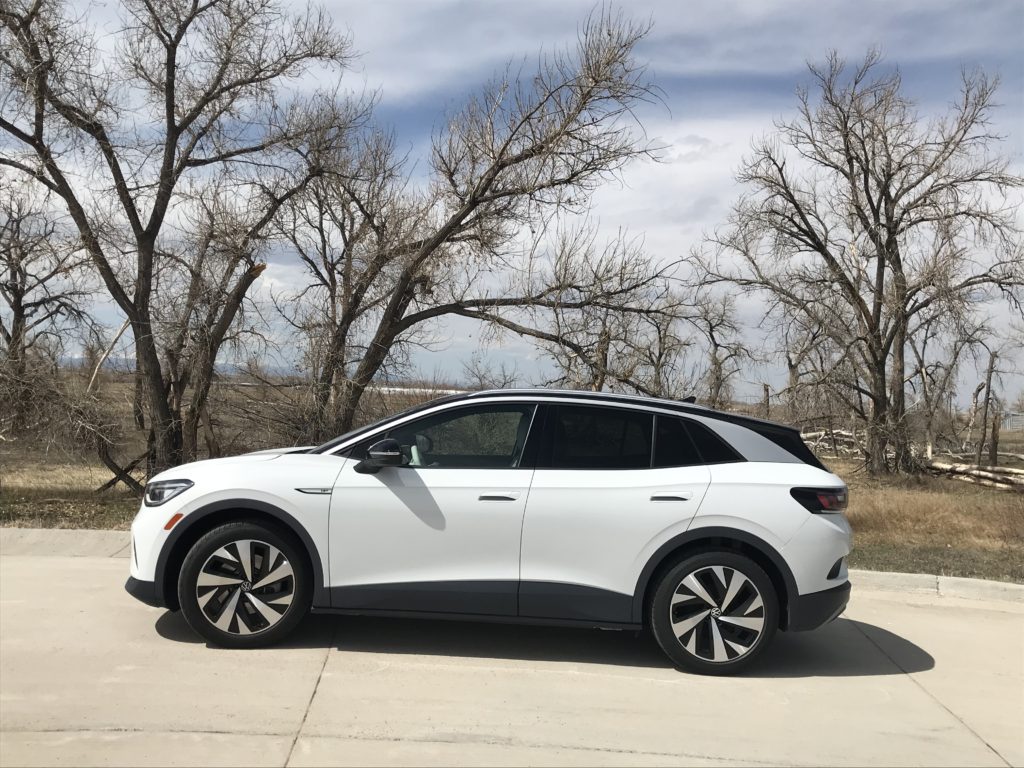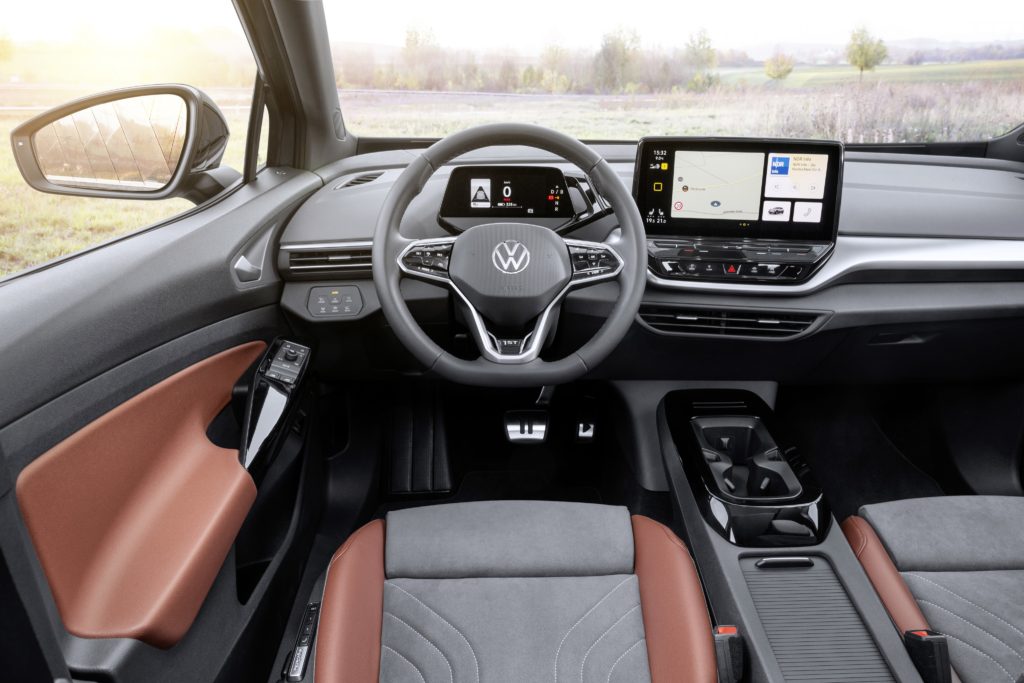
The small, smooth ID.4, the one that temporarily put the “t” in Volkswagen, is no joke.
It is a well-designed, fully electric SUV crossover that VW expects will emphasize the brand’s focus on electrification.
The ID.4, along with another recently introduced EV, the Ford Mustang Mach-e, are worthy challengers for established electrics Chevy Bolt, Nissan Leaf, Kia Niro and Hyundai Kona, all of which produce range expectations of 220 to 260 miles.
VW officials expect the ID attraction to spill over even against sales stalwarts of the internal-combustion crowds, the Honda CR-V and Toyota RAV4. That’s a best-case scenario.
Volkswagen estimates a range of 250 miles for the ID.4. That range will vary, depending on weather and terrain, and certainly on highway speeds.
Jan and I drove from our home in Greeley to Panera Bread at I-25 and 144th Avenue for coffee with Kurt and Tammy Wells. Speeds, first on U.S. 34, then south on I-25, varied from around 65 to 78 miles per hour for a distance of 44 miles, yet the range reduction was 55 miles. On the return drive, we drove east on 144th to Colo. Blvd. road, then north to Greeley on 55-mph roads, a distance of 41 miles, which reduced the range by only 31 miles.
Monday morning, with 90 miles of range remaining in the ID.4 and needing a quick-charge for a drive into Denver, I pulled into Greeley Volkswagen. Not much was stirring inside the dealership, except for the friendly face of Carlos Jimenez, sales manager.
“Sure, we can give it a charge,” said Jimenez, who was surprised to see it pulled in and parked. There are few yet on the road. Jimenez asked for the ID’s key, got in and drove it 50 feet to the next-door building, Greeley Nissan, and with the help of a representative of that business, began the recharge. In 40 minutes, the VW’s range was boosted from 90 to 190 miles, plenty for my need that morning. Range capacity for the ID.4 is 250 miles.
I discussed with Jimenez the effect of highway speeds upon the little electric model. Jimenez explained how regenerative braking can expand the range in town driving. The Greeley Volkswagen sales team, with the dealership’s first ID.4, for several days in town shifted from the D (drive) gear to B (battery) which meant using the regenerative braking gear on deceleration; they attained 311 miles of range, a big gain over the estimated 250.
Jimenez, who worked in Boulder prior to coming here, said that city was much quicker to embrace the hybrid/plug-in/electric movement, but that there is growing interest now in the Greeley area and that he expects the VW entry to be very competitive.
We drove, rather quickly, for 74 miles to our destination in Denver, using 83 miles of range. After lunch at the New York Deli, we chose a much slower return route on U.S. 85. In 63 miles, the ID.4 gave up only 54 from its battery pack range. The car’s regenerative braking pressure is increased by moving the shifter from D to B.
That 82-kWh battery pack, beneath the floor of the passenger area, weighs a bit more than 1,000 pounds. That swells the curb weight of the ID.4 to a hefty 4,659 pounds. In size, it is almost 5 inches shorter than Volkswagen’s compact crossover, the Tiguan. It is built in Mosel, Germany.
The ID.4 is rear-wheel drive; its 201-horsepower electric motor sits over the rear axle. An all-wheel-drive version of the model will be introduced later in the year. The VW is a good handler, very quiet and offers a comfortable ride. Its infotainment center is somewhat difficult to command, even with its voice connection.
The ID.4 can be recharged fully in 7 ½ hours with 240-volt power. An overnight charge with 120-volt will add 40-50 miles or so of range.
The ID.4 1st Edition is the upper trim level for the model, and carries sticker price of $45,190. Lesser-priced versions are Pro and Pro S.
Early last week, about the time I received the ID.4 for reviewing, a Volkswagen press release said the company planned to change its brand name in the North American market to “Voltswagen” (thus, the reference to the ‘t’ in Volkswagen at the start of this column). “It was an April Fool’s joke,” VW said later.
